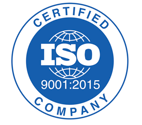
Since the introduction of European Union Medical Device Regulation (“EU MDR”) in May 2017, medical device companies have been hard at work to understand the new requirements (see our blog EU MDR - A Call to Action for Manufacturers). The mandatory deadline for compliance is May 2020, but with 123 Articles and 17 Annexes to navigate through, most quality and regulatory leaders are wisely starting their preparations early. As compared to the previous directives, this new regulation carries several significant changes, with one of the more prominent features being the enhanced requirements around clinical evidence. The need for appropriate and sufficient clinical evidence is nothing new, but the EU MDR has now taken it to another level with much more stringent stipulations. Some of the more crucial elements impacting clinical evidence are as follows:
1) Equivalence arguments will be heavily scrutinized and will be much more difficult to justify. Notified Bodies must specifically document their conclusions regarding equivalence claims, and are expected to reject many of the claims that were successfully made in the past. The EU MDR states “It shall be clearly demonstrated that manufacturers have sufficient levels of access to the data relating to devices with which they are claiming equivalence in order to justify their claims of equivalence.” Consequently, medical device companies must modify their clinical processes and documentation in response to these tougher mandates.
2) Risk management must be closely intertwined with clinical evaluations. Under the previous directives, risk management was much less of a focus and would typically be evaluated and analyzed separate and apart from the clinical evaluation process. Now, under the new EU MDR, documentation must clearly show a close alignment between risk management concepts and clinical evaluations.
3) The clinical evaluation and the resulting clinical evidence (including both favorable and unfavorable data) must be documented in a Clinical Evaluation Report, which, except for custom-made devices, should be part of the technical documentation. As described in Annex XIV, the Clinical Evaluation Report should include, at a minimum, the following:
• an identification of the general safety and performance requirements that require support from relevant clinical data;
• a specification of the intended purpose of the device;
• a clear specification of intended target groups with clear indications and contra-indications;
• a detailed description of intended clinical benefits to patients with relevant and specified clinical outcome parameters;
• a specification of methods to be used for examination of qualitative and quantitative aspects of clinical safety with clear reference to the determination of residual risks and side-effects;
• an indicative list and specification of parameters to be used to determine, based on the state of the art in medicine, the acceptability of the benefit-risk ratio for the various indications and for the intended purpose or purposes of the device;
• an indication how benefit-risk issues relating to specific components such as use of pharmaceutical, nonviable animal or human tissues, are to be addressed; and
• a clinical development plan indicating progression from exploratory investigations, such as first-in-man studies, feasibility and pilot studies, to confirmatory investigations, such as pivotal clinical investigations, and a Post-Market Clinical Follow-Up (PMCF) with an indication of milestones and a description of potential acceptance criteria.
4) The European Database on Medical Devices (“Eudamed”), which allows for unique identification of devices to improve traceability, will now be publicly available. This will allow the public to remain informed about available devices on the market, keep up with the relevant clinical investigations, and understand the applicable certificates which have been issued. Manufacturers must use this web-based portal to provide much of the data required by the EU MDR, including vigilance information for serious incidents and field safety corrective actions, along with trend reporting.
5) For Class III devices and implantable devices, other than custom-made or investigational devices, medical device manufacturers are required to develop a summary of safety and clinical performance. This summary must be made available to the public via Eudamed. A sample of some of the aspects to be included in this summary are the identification of the device and the manufacturer; the intended purpose of the device, indications, and target populations; a description of the device including reference to previous generations/variants and the differences, as well as a description of other accessories or products intended to be used in combination with the device; possible diagnostic and therapeutic alternatives; and suggested training for users.
6) For Class III devices and certain Class IIb devices as described in the EU MDR, a manufacturer may consult with an expert panel prior to its clinical evaluation to review the intended clinical development strategy and the proposals for clinical investigation. Due consideration must be given to the views of such expert panel, and this consideration must be documented in the Clinical Evaluation Report, described above.
The new parameters around clinical evidence represent one of the key differences captured in the EU MDR. Regulatory professionals throughout the medical device industry need to get their arms around these differences quickly as the mandatory deadline is fast-approaching. One of the first steps should be to perform a gap assessment to understand the extent and nature of the deficiencies as compared to the new requirements. From there, leaders can develop a detailed plan of action steps and resources needed to close the gaps in a timely manner. Don’t make the mistake of under-estimating the time and effort involved…if you have not commenced your assessment yet, it’s time to get started now.







